| This case demonstrates the use of the gull-wing shaped hamate articular graft for replacement of loss of the palmar half of the distal phalanx articular surface from a DIP dorsal fracture-dislocation. This is analogous to the HHRA reconstruction described for PIP fracture dislocation ( Case 1, Case 2, Case 3, Article ) , but because of differences in anatomy, has been performed through a bayonette exposure rather than the traditional PIP shotgun exposure. One goal of this exposure is to allow immediate postoperative motion by avoiding the need to perform a tenotomy to expose the joint. |
| Click on each image for a larger picture |
| The injury:dorsal DIP fracture dislocation of the ring finger of a 16 year old male sports hopeful. |
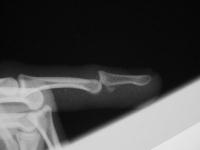 |
| Unstable even in a well molded splint. |
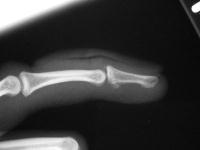 |
| Custom articular osteotome designed to create an intraarticular osteotomy through the distal hamate surface, a bit easier to control than a Freer elevator. |
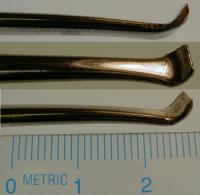 |
| Intraoperative fluoros: The injury, reconstruction through a bayonette exposure, stable reduction. |
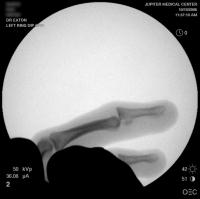 |
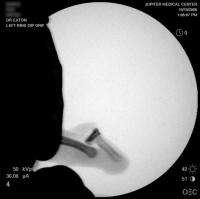 |
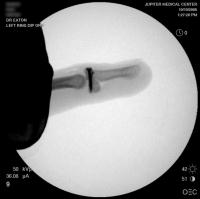 |
|
Skin Incision Collateral ligaments take down Dorsal dislocation "Bayonette" exposure Fracture debridement Measure defect Graft harvest from ring-small juncture of hamate Provisional fixation with Kwires through extensor tendon Replace Kwires with screws Closure |
| Three months postop, following a program of immediate protected motion supervised in therapy. No pain, full flexion, 20 degree extensor lag, ready for sports. |
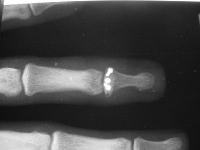 |
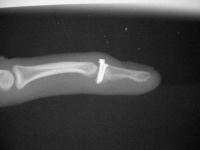 |
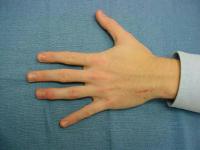 |
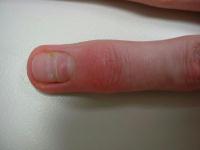 |
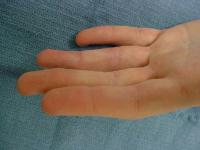 |
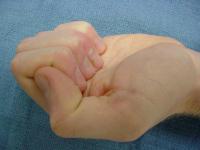 |
|
|
|
Search for... interphalangeal fracture dislocation hhra
|
Case Examples Index Page | e-Hand home |